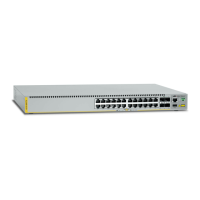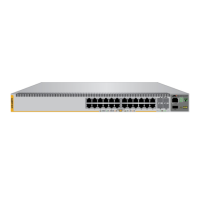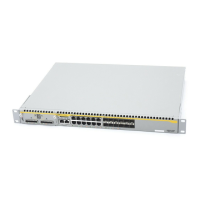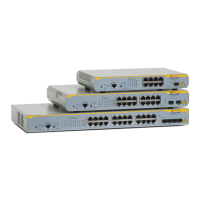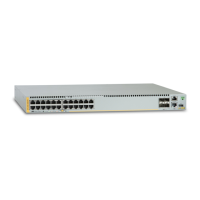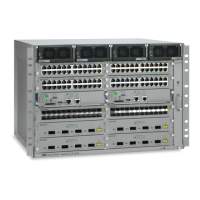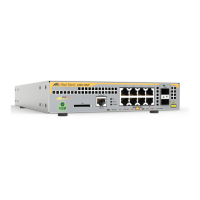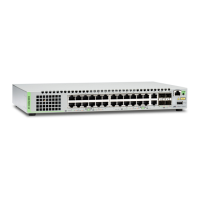x530 Series Quick Installation Guide 15
The ports must be set to Auto-Negotiation, the default setting, to
operate at 1000Mbps or higher speeds.
The ports support half- and full-duplex at 10Mbps and 100Mbps.
The ports support only full-duplex at 1000Mbps and higher
speeds.
Do not attach cables to ports of static or LACP port trunks until
after you configure the trunks on the switch. Otherwise, the ports
will form network loops that can adversely affect network
performance.
PoE+ is enabled by default on the ports on the x530-28GPXm
and x530-52GPXm Switches.
Installing SFP+ Transceivers
Here are general installation guidelines:
You can install SFP+ transceivers while the switch is powered on.
For a list of supported transceivers, refer to the product’s data
sheet on the Allied Telesis web site at www.alliedtelesis.com.
The operational specifications and fiber optic cable requirements
are included with the transceivers.
Install the transceivers before connecting their fiber optic cables.
Fiber optic transceivers are dust sensitive. Always keep the dust
cover in the optical ports when a fiber optic cable is not installed.
Unnecessary removal and insertion of transceivers can lead to
premature failures.
Note: Do not cable the SFP+ S1 and S2 ports yet. To use the ports
as regular Ethernet SFP+ ports, you have to disable the VCStack
feature. For instructions, refer to “Disabling the VCStack Feature”
on page 22 or the
x530 Series Installation Guide for Standalone
Switches. To use the ports as stacking ports for VCStack, refer to
the x530 Series Installation Guide for Virtual Chassis Stacking.
Warning: Transceivers can be damaged by static
electricity. Be sure to observe all standard electrostatic
discharge (ESD) precautions, such as wearing an
antistatic wrist strap, to avoid damaging the devices.
E86
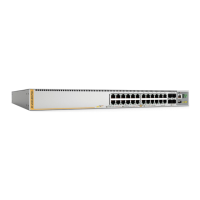
